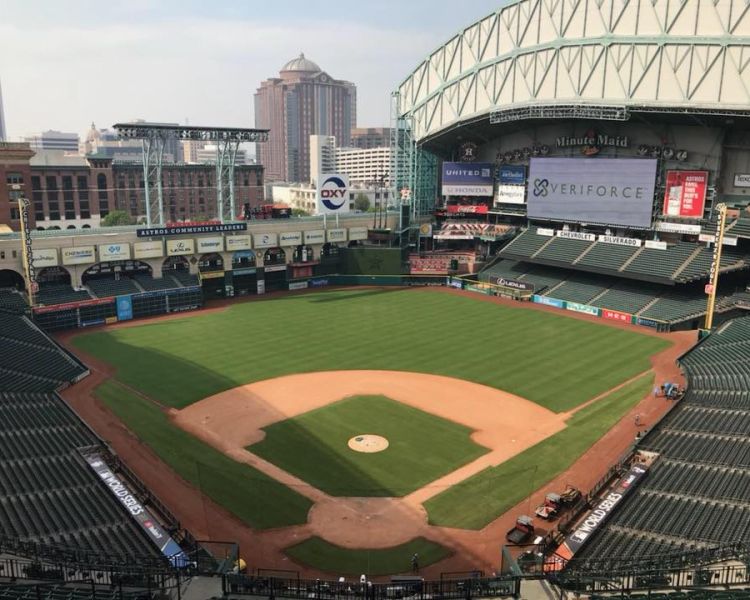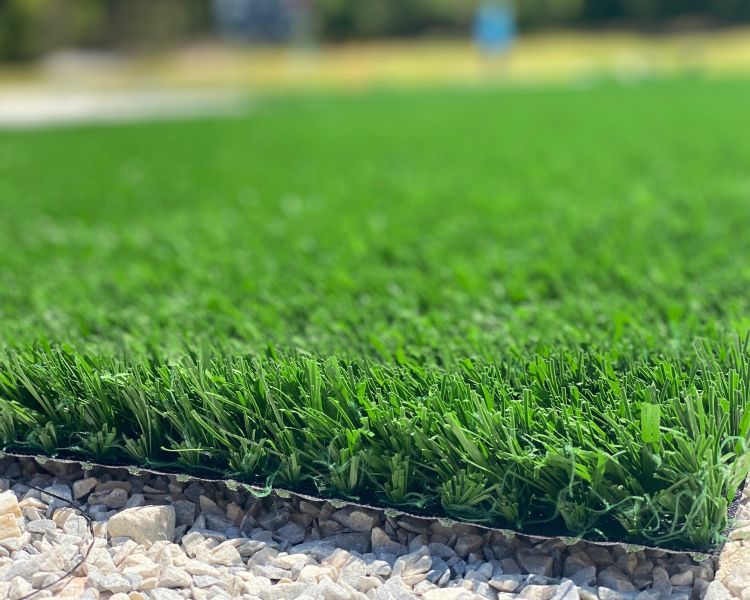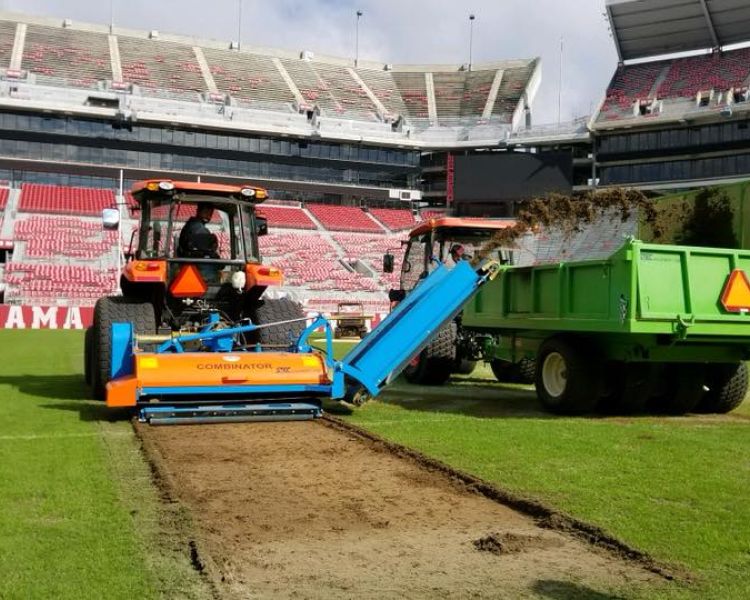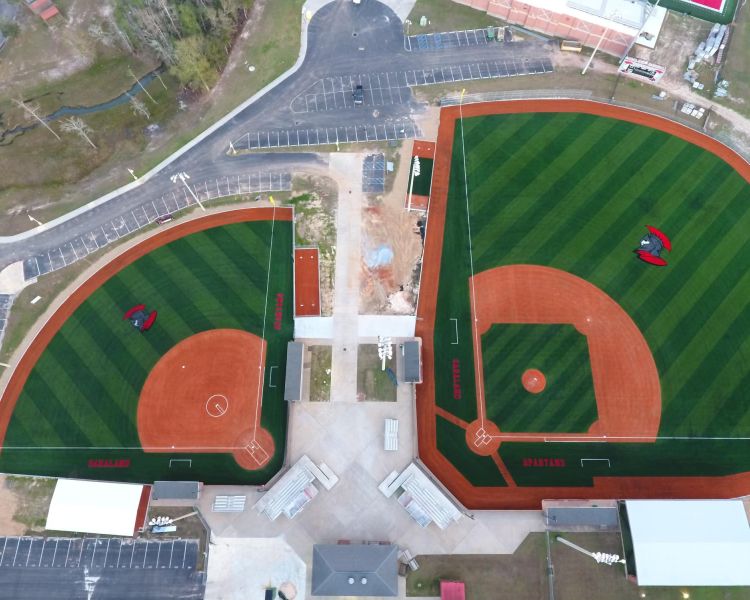Request An Estimate
[forminator_form id=”101″]Sports Field Construction & Design Services
Field Design
River Region Sports Fields is your local expert for the design and build of any sports field. Whether it’s for little league or professional sports, we can design and build athletic fields on any budget. Our experienced staff will walk you through every step of the athletic field construction process, ensuring your project is delivered on time and on budget.
Laser Grading
An essential practice in construction, Laser Grading is an operation that establishes a level or specified slope across a surface. An uneven, inconsistent surface can promote puddling, soft spots, holes, and lips, resulting in the failure of the field. Our qualified team can grade any surface to +/- 1/8” on grade. Our machines disperse weight evenly over 6 tires, reducing localized compaction.
Laser Grading is critical when either establishing a new athletic surface or renovating an existing one. Laser Grading will ensure: Precise & Accurate surfaces. Proper sloping for water runoff. Consistent & even playing surface. Increased safety, playability and productivity.
Sodding/Springing
Sodding is the quickest but most expensive method of initially establishing turf. Its use on an athletic field is best suited to those situations requiring a mature, wear resistant turf cover in a short time. A properly laid sod on a well-prepared sodbed will knit and be ready for use within 4 to 6 weeks. In contrast, one full growing season is needed to produce comparable turf by seeding.
Sodding generally is not recommended for sand field construction unless sod grown on a comparable sand can be found. Sod produced on heavy soil may impede water infiltration into the sand. Sod produced with commercial sod netting should be avoided on all fields. Player cleats penetrating the sod may become entangled in the netting, causing the player to fall or to rip out large pieces of sod.
A successful sodding operation depends on the quality of sod, its condition, and the care used in preparing the bed and laying the sod. Unless quality sod is used, results will not justify the high cost involved in establishing turf by this method. It should be dense and well knit so that sod can be cut as thin as possible, and in long strips that can be rolled to facilitate handling. Thinly cut sod weighs less, lies better, and roots quickly. Quality sod of the grasses adapted for use on athletic fields should have a maximum root and soil thickness of one-half to three-quarters of an inch. It should be cut in strips 12 to 18 inches wide and 4 to 6 feet long. This makes a convenient size roll for handling. If cut sod is to be held for several days before laying, it should be spread out flat, grass side up, in a cool place and kept moist. Rolled or stacked sod will weaken and yellow rapidly and will not be in good condition to start growth promptly when laid.
Preparation of the sodbed, including liming, fertilizing, and soil conditioning, should be the same as for seedbeds. The surface should be firmed by rolling, and, if dry, it should be wet down with a fine spray just prior to laying sod.
The first course of sod should be laid to a line that has been squared to the longitudinal axis of the field. Sods of the next course are matched against the first so that the joints between pieces inn the adjacent courses do not coincide. The sod is tamped lightly as it is set to insure good contact with the soil surface at all points. Any openings that occur in the seams between pieces should be filled with prepared topdressing to prevent excessive drying out at these spots. In periods of dry weather, a regular watering program should be followed until the sod has rooted.
Freshly laid sod should not be rolled. Rolling at this time often causes the sod to creep ahead of the roller and usually does more harm than good. After rooting has occurred, a light roller can be used to smooth out minor irregularities.
Drainage Systems
Our team installs top performing sports field drainage systems as part of our athletic field design and installation services. We use state-of-the-art technology for all our drainage systems so that they always offer peak performance. The technology and proven methods we incorporate into our athletic field drainage installation efforts allow for:
- Athletic Field Drainage Systems
- Zero water-related damage to your field
- Zero interruption in play time
- Optimal play in unfavorable conditions
- Less weather-related cancellations
- A proper drainage system is a vital part of any sports field construction project.
Without the proper drainage channels, your baseball, football, or soccer field can incur damage to the point of becoming obsolete. We work closely with our clients to create a plan that always assures optimal drainage, leaving you with a field that is available for your athletes to use.
Because draining capabilities are such an important part of baseball, soccer, or football field construction, it is vital to choose a company with experience and capabilities to handle this work level. Your turf and your sub-grade must have effective drainage capabilities to prevent soil erosion – or worse – injuries to your athletes.
River Region Sports Fields can meet your needs with our qualifications, including:
- Decades of industry experience
- Capabilities for compete field construction services
- Engineer excellent sub-bases and oversee installation processes
- Create solutions with the right athletic field drainage system design no matter what the top-level conditions are
Don’t let weather conditions limit usage of your football, soccer, or baseball field. Make certain your sports field drainage system is always operating at peak performance by contacting us today. We are home to the industry’s finest athletic field constructors and installers, and our expertise will show. You can count on us for every step from base construction all the way to ongoing top-level field maintenance.
We specialize in: Perched water table systems, Modified and manufactured soil mixes, Slit drainage as an alternative to underground drainage, Slit drainage as an alternative to underground drainage, The importance of ensuring efficient surface runoff, Through drainage.
Irrigation Systems
We are a provider of complete sports turf field irrigation systems. Our installation specialists bring a wealth of experience to the work they do. We are committed to combining the latest technological advances to provide sports fields the most cost-efficient watering systems available.
Natural turf fields are much more complex than a traditional lawn where the water can be absorbed over time. The base and aeration of the soil needs to be just right to ensure that the grass grows a thick thatch to support the heavy foot traffic and gameplay. When irrigating these types of athletic surfaces, it needs to reach the root level for healthy nutrient absorption that does not flood the top surface. Standing water is never safe for athletes.
Let our irrigation experts generate a custom sports turf irrigation system that is perfect for the specifics of your athletic field. In doing so you will guarantee upgraded field conditions year-round and a healthier bottom line. Contact us today about getting started on a new watering system at your sports complex.
It is almost impossible to maintain high quality sports fields without irrigation. Because of heavy use of most fields, irrigation is also needed to produce grass that grows fast. Seldom is more than one season during the year for grass to develop or recover. Obtaining quality in such a short period almost always requires irrigation.
Rootzone Construction
Determining the best rootzone for a field can be a difficult decision. Because the rootzone determines field quality, sports turf managers are always looking for the best available growing medium. The two main types of rootzones are native soils and sand based soils, and both have their advantages and disadvantages. Native soil, modified soils and sand based mixes. Based upon budget and field expectations we will assist you in selecting the right rootzone for your needs.
Infield Mixes
Specialized mixes with specific sand, silt and clay to fit field needs. Field conditioners, warning track and mound clay also available. Technically, the term infield skin refers to segments of the baseball field that contain clay, specifically the areas around the bases and base paths. The keys to quality infield skin are good materials, proper moisture and consistent maintenance practices. With 70 percent of the game played on the infield, having a consistently firm, smooth playing surface is essential.
Request Consultation
"*" indicates required fields



